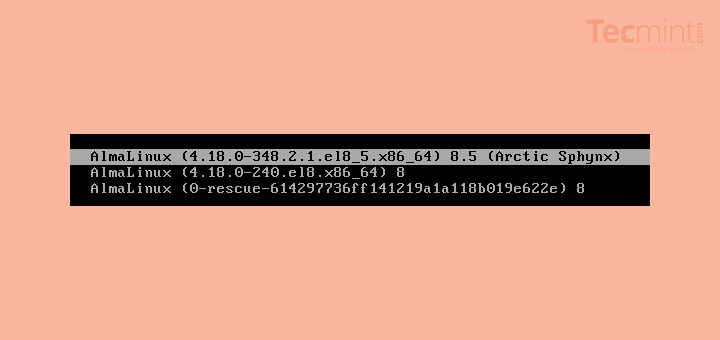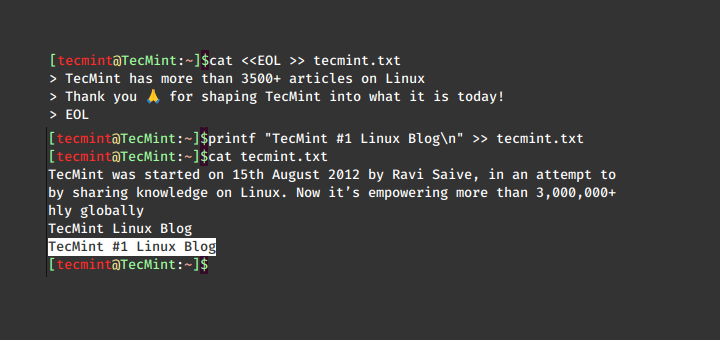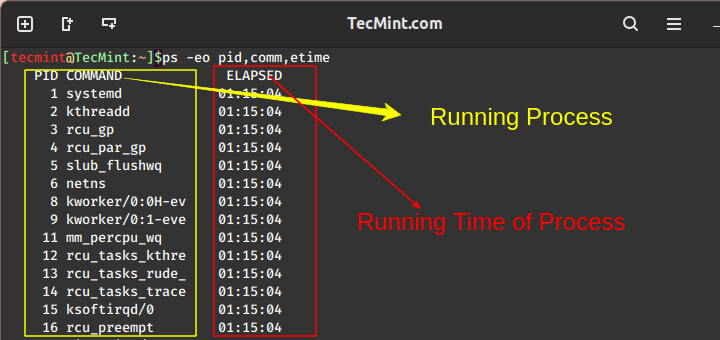For a person new to Linux, finding Linux functional is still not very easy even after the emergence of user friendly Linux distribution like Ubuntu and Mint. The thing remains that there will always be some configuration on user’s part to be done manually.

Just to start with, the first thing a user should know is the basic commands in terminal. Linux GUI runs on Shell. When GUI is not running but Shell is running, Linux is running. If Shell is not running, nothing is running. Commands in Linux is a means of interaction with Shell. For a beginners some of the basic computational task is to:
- View the contents of a directory : A directory may contains visible and invisible files with different file permissions.
- Viewing blocks, HDD partition, External HDD
- Checking the integrity of Downloaded/Transferred Packages
- Converting and copying a file
- Know your machine name, OS and Kernel
- Viewing history
- Being root
- Make Directory
- Make Files
- Changing the file permission
- Own a file
- Install, Update and maintain Packages
- Uncompressing a file
- See current date, time and calendar
- Print contents of a file
- Copy and Move
- See the working directory for easy navigation
- Change the working directory, etc…
And we have described all of the above basic computational task in our First Article.
This was the first article of this series. We tried to provide you with detailed description of these commands with explicit examples which was highly appreciated by our reader in terms of likes, comments and traffic.
What after these initial commands? Obviously we moved to the next part of this article where we provided commands for computational tasks like:
- Finding a file in a given directory
- Searching a file with the given keywords
- Finding online documentation
- See the current running processes
- Kill a running process
- See the location of installed Binaries
- Starting, Ending, Restarting a service
- Making and removing of aliases
- View the disk and space usages
- Removing a file and/or directory
- Print/echo a custom output on standard output
- Changing password of on-self and other’s, if you are root.
- View Printing queue
- Compare two files
- Download a file, the Linux way (wget)
- Mount a block / partition / external HDD
- Compile and Run a code written in ‘C’, ‘C++’ and ‘Java’ Programming Language
This Second Article was again highly appreciated by the readers of Tecmint.com. The article was nicely elaborated with suitable examples and output.
After providing the users with the glimpse of Commands used by a Middle Level User we thought to give our effort in a nice write-up for a list of command used by an user of System Administrator Level.
In our Third and last article of this series, we tried to cover the commands that would be required for the computational task like:
- Configuring Network Interface
- Viewing custom Network Related information
- Getting information about Internet Server with customisable switches and Results
- Digging DNS
- Knowing Your System uptime
- Sending an occasional Information to all other logged-in users
- Send text messages directly to a user
- Combination of commands
- Renaming a file
- Seeing the processes of a CPU
- Creating newly formatted ext4 partition
- Text File editors like vi, emacs and nano
- Copying a large file/folder with progress bar
- Keeping track of free and available memory
- Backup a mysql database
- Make difficult to guess – random password
- Merge two text files
- List of all the opened files
Writing this article and the list of command that needs to go with the article was a little cumbersome. We chose 20 commands with each article and hence gave a lot of thought for which command should be included and which should be excluded from the particular post. I personally selected the commands on the basis of their usability (as I use and get used to) from an user point of view and an Administrator point of view.
This Articles aims to concatenate all the articles of its series and provide you with all the functionality in commands you can perform in our this very series of articles.
There are too long lists of commands available in Linux. But we provided the list of 60 commands which is generally and most commonly used and a user having knowledge of these 60 commands as a whole can work in terminal very much smoothly.
That’s all for now from me. I will soon be coming up with another tutorial, you people will love to go through. Till then Stay Tuned! Keep Visiting Tecmint.com.
Like and Share and Help us to Spread







Team,
Tecmint is the first link that comes to my mind when I want to refer to anything in Linux, so here I am to ask for help for the best recommendation for setting up user home directories which should be accessible from windows and Linux using Active directory accounts.
More information :
OS: RHEL 7.9
System added to the domain using one identity tool.
where are links to articles, please share
@Sudheer,
Links are already added in the article, please have a close look…
Thanks very much for putting all Linux commands one place for easy learning..
Tecmint is always good for the quality of Information and knowledge sharing on Linux.
@Anil,
Thanks for such kinds words about Tecmint, keep visiting for such quality articles on Linux.
Thank you very much.
The way you have planed your articles is very useful, as you added the screenshots for us to see exactly what is the output of each command typed.
thanks for this guide it has helped me alot
“A Guide from Newbies to System Administrator” should be changed to “A Guide for Newbies from System Administrator” or “A Guide from System Administrator to Newbies”
Content is good :) Thanks.
Very useful guide for beginners.
so how to to resize /Home partation because i give the 235G space in /Home and it was bymistake…..i want my /Home use only 50G and rest of space i want free because of there is no uses to give big amount of space in /Home……so please tell me what to do???
@Khushal,
I already given the link with solution, just go through it..
thanks for wonderful combination of basics commands but i have a one question can you just tell me….in my asterisk server / space is 50G only and /home is 235G so how to transfer /home space to /
reply soon I am waiting
@Khushal,
The best option is to resize your / partition, same question asked by one our reader at our LinuxSay Forum at:
http://linuxsay.com/t/how-to-resize-the-partition-in-ext4-filesystem/1489/12
Try to follow those steps to resize your partition..
sir this not answer of my question….im just asking how to tranfer space /Home to / root disk
@Khushal,
You can’t simply move space from one partition to another, the only way is to resize the partition or use mhddfs tool
Hi,
Thank you so much for this nice article .Very helpful to work on Linux …
Very nice articles, post and even whole web-site. I never seen any website that provide so much information on LINUX. This is BEST. Thank you TECMINT.COM. You guys are on the right way. You guys are helping so many people in the industry.
Keep Posting..Always love to read n follow new posts of TECMINT.com
Happy to know @ Pratik, that my writing helped you. Keep Connected!
Hi Avishek,
This is a really useful article on Linux.
Thank you very much for creating this.
Hope you will provide an article on more advanced Linux commands.
Welcome Vajira, Keep Connected!
tq for a good article! really helpful for me as a beginner in Linux community
Welcome @ halcyon, keep connected for more such post.
Are there specific abbreviations to enter for the codes or should I go to shell and just type what was given and it will show me. I know cd is for change directory. I am trying to study and practice the most common used ones. I know by repetition it will become easier.
@Barbara,
No abbreviations, just open shell and copy/paste the commands from the article and see the results, nothing extra hard work..:)
Brother, it is useful but also something like unsatisfaction i was com to check some commands. kindly send me the just some useful commands
Dear @ Afzal
These are the basic and most useful commands. You may follow the associated link to get more descriptive article. If you finds any missing command we haven’t covered, Poke us.
Keep Connected, Enjoy!
Hello,
Avishek Kumar first of all many many thanks to you,with outer help i can not climb on first step of linux world and i am working on Linux & Cloud.
I always follow your post and Every post in Tecmint that keeps me always update my knowledge.
Thanks a lot
Welcome @ Meraj Hussain.
Keep connected for more such helpful writing.
Your’s comment acknowledged, we are doing fine. Thanks!
Thanks for this Article
Welcome @ Vinoth
Superb tutorial sir
very nice add some more commands n linux tutorial in this site plzzz sir n ha thanx for sharing with us :)
Welcome @ Joshi,
keep connected!
Thank you.
Welcome @ Khoi D. DInh
Hi Avishek,
Its really helped me understand in detail!! Looking forward for more posts.
Thanks
Wonderful to know this @ Kavitha.
Keep connected! Kudos
Dear Avishek,
Its very usefull.
Great work…
Regards,
Veeru.
Thanks @ veerendra for the wonderful feedback!
Dear Avishek and Ravi,
I googled and found tecmint a better source of learning Linux Administration. Please do keep it up to mark and give some detailed information to troubleshoot networks and IP address schema.
Regards,
Aali
Dear Milan,
Thanks for your appreciation.
we are working in all the possible way, to benefit our regular readers.
Keep connected to Tecmint.com.
Thanks for this useful article !!
Awesome work !!!
Small suggestion- Pls ellaborate with mostly used arguements
Dear Hars,
Thanks for your wonderful words.
we welcome your suggestion and will shortly start working on it.
Very helpfull post.
Well the content is for only L1 and L2 level? or it includes L3 As well.
Dear Nasir,
Good to know, it was helpful for you.
There is nothing called L1 and L2.
Its all about increasing your knowledge base, in the right way and feedback of such kind tells the whole story.
these commands r useful 4 me tkx a lot
Welcome @ Vasant Singh
Yes, this information is very helpful. I am an intermediate user of linux, and have used it for almost a year now. I spend around 20% of my time in terminal. Some of these commands, I have never heard of! Thanks very much :-)
Thanks @ cody, for the above nice words
My issue in vacation setup I have postfix with postfix mailadmin setup mails r working fine issue with vacation setup
@ Bharath You have problem in vacation setup is an issue. but Until and Unless you dont provide us the complete details of what is going on, we cant Help you.
hi,
i am going to attend the interview based on Linux position. so they expect basics of Linux from me.i need to prepare Linux from the basic,so sent the suitable link for me
Regards,
tamil
Dear tamil,
we post each of our article, from Knowledge point of view. You can subscribe us and go through each of our post, as well as previous post, to have a lot of Linux/FOSS related knowledge.
This is very very good. Keep on a good work. I follow them all.
THanks @ Marwin :)
It helps a lot on my side!
Happy to know that it was helpful, thanks @ Agatha
Hi,
This is Ziaul Mustafa and i would like to know about linux basic commnads.
so kindly please any link to above my mail id from there i can find easy way to
solve my issue.
Regards,
Ziaul Mustafa
Dear Ziaul Mustafa,
it would be painful for us to send everyone the links and contents.
Please stay connected to us and go through our posts and articles for better and deep understanding of knowledge. If you find any topic not covered by us, please make us know, so that we can help you.
Hope You Understand.
thanks for guidance, this helps alot
Welcome @ John Hunnefield